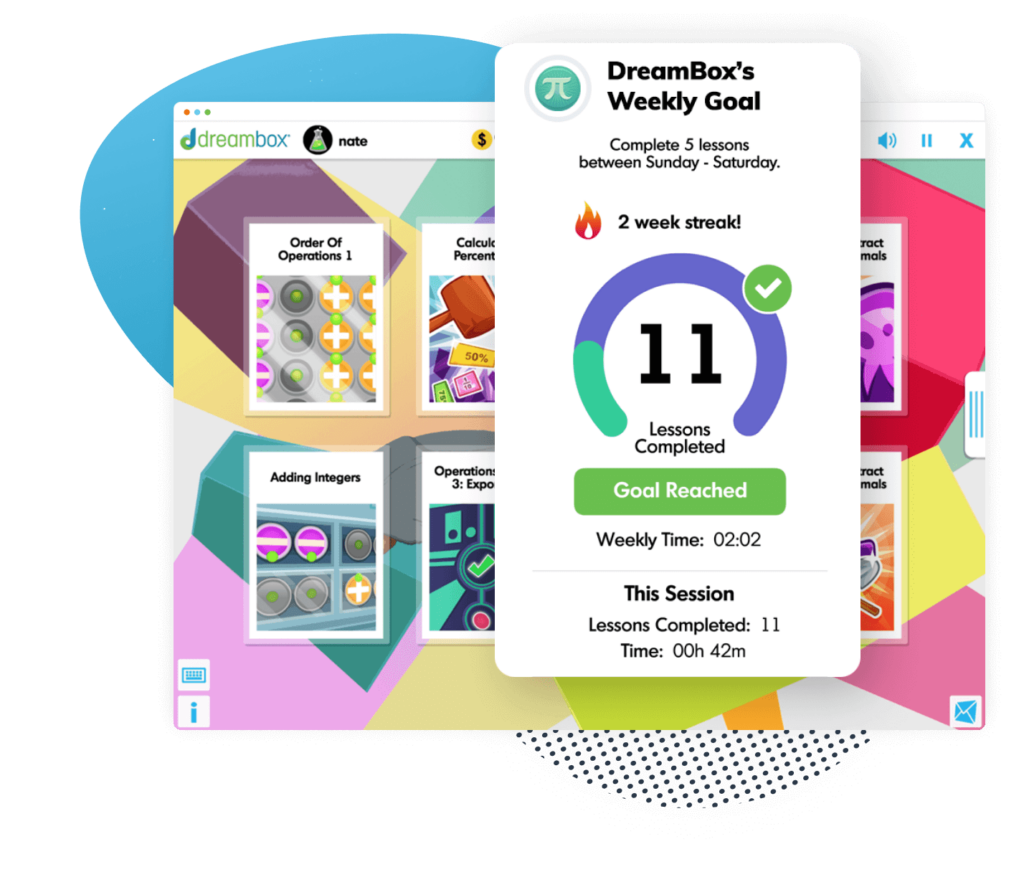How to help a 2nd grader with math
The top 10 tips to help your 2nd grader progress in math while boosting their confidence and making learning enjoyable along the way!

Author
Michelle Griczika
Published:
Oct 2024
Key takeaways
- • Lack of sleep, low motivation, or a disconnect between school and home learning can contribute to math struggles in second graders
- • Unleash your 2nd grader’s joy of math through engaging activities, real-world connections, and a positive mindset.
- • Math apps are a smart and affordable option (plus, they’re enjoyable!) instead of hiring a private tutor for your second-grade child.
Is your second grader facing challenges with math? Lack of sleep, decreased motivation, or a disconnect between school and home learning can contribute to their struggles. As parents, it’s important to understand the 2nd grade math curriculum and identify specific areas where your child needs assistance. In this article, we’ll provide you with ten effective strategies to support your 2nd grader in overcoming math challenges and achieving success. Let’s unlock your child’s math potential together.
10 ways to help your 2nd grader with math
Math help for 2nd graders is simpler than you think. It just takes time, patience, and a bit of creativity. Take a look at our recommendations for second-grade math help and try them out with your child this week.
1. Boost confidence through encouragement
Celebrate your child’s efforts and achievements in math, emphasizing progress rather than focusing solely on correct answers. Let them know that making mistakes in math is how you grow and it is okay to need 2nd grade math help.
Table of contents
Access more math practice with DreamBox
2. Make math fun with engaging activities
Explore math beyond textbooks by incorporating fun activities like math games, puzzles, and real-life math challenges. Find interactive math resources, both online and offline, that align with your child’s interests. Math apps, math scavenger hunts, and and 2nd grade math practice problems are all great tools to help weave math into your child’s day to day.
3. Practice math at home
Set aside regular time for math practice at home. Work together on math problems, utilize flashcards, or engage in math-related projects that involve hands-on learning and problem-solving.
4. Foster a positive attitude
When wondering how to help a 2nd grader with math, show enthusiasm for math and highlight its relevance in everyday life. Encourage a growth mindset, where mistakes are opportunities for learning and improvement.
5. Set achievable math goals
Math help for 2nd graders includes setting realistic math goals, such as mastering identifying new shapes or improving on greater than and less than skills. Break down the goals into smaller milestones to celebrate progress along the way.
6. Connect math to real-life scenarios
Demonstrate how math is in everyday situations, such as counting the money they earned from doing chores, measuring how much water it takes to make lemonade, or practicing telling time when they wake up and go to sleep.

The math program that drives results
Get started today!
DreamBox adapts to your child’s level and learning needs, ensuring they are appropriately challenged and get confidence-building wins.
7. Encourage math dialogue
Engage your child in math discussions by asking open-ended questions and encouraging them to explain their thoughts. This promotes critical thinking and strengthens their understanding of math concepts.
8. Collaborate with teachers
Stay in touch with your child’s math teacher to understand the second grade math curriculum and identify areas where your child may need additional support. Collaborate on strategies to reinforce learning at home.
9. Celebrate progress and effort
Recognize and reward your child’s progress and effort in math. Focus on the process rather than just the outcome. Use positive reinforcement, such as praise, small rewards, or a special math-related outing to motivate them.
10. Try a math app
Introduce your child to DreamBox, an app for math help that offers personalized math lessons tailored to their learning needs. It provides a scaffolded approach, gradually introducing concepts and building a solid math foundation.
Math apps vs tutoring
Your child may need more support than just your encouragement in the subject. While private tutoring is a wonderful option, the popularity of personalized math practice apps is growing. Both options have unique strengths when choosing the best option for your child.
Math apps offer convenience and accessibility, allowing kids to dive into math anytime and anywhere. The interactivity and fun features of these apps make learning math an engaging adventure.
However, it’s essential to remember that tutoring offers something special too. Tutors can cater to a child’s specific needs via hands-on instruction. Keep in mind, one to two tutoring sessions can cost you the same amount as a full-year subscription to a math app like DreamBox.
Ultimately, the decision between math apps and tutoring depends on what works best for your child and their learning style.
FAQs about 2nd-grade math help
There’s no single way to subtract decimals, but the first thing you want to do is line the numbers up vertically with the largest number on top and make sure the decimal points line up. Fill in any zeroes to make sure you have the same amount of numbers (so, for example, if you have 4.5 and 7.68, add a zero to 4.5 to make it 4.50). Then, subtract!
In 2nd grade math, students should have a solid understanding of addition and subtraction, counting up to 1000, comparing two- and three-digit numbers, place value, solving simple word problems, recognizing geometric shapes, working with money, and measuring length, weight, and time.
To develop number sense, allow your child to work with numbers in various contexts. Please encourage them to count objects, estimate quantities, and compare numbers. Practice skip counting by twos, fives, and tens to strengthen their understanding of number patterns. Engage them in number talks, where they can discuss strategies and reasoning behind their mathematical thinking.
The recommended time for a 2nd grader to practice math at home can vary. It is generally recommended to spend 10-15 minutes per day on math practice. This duration allows for consistent reinforcement of concepts without overwhelming the child. However, every child is unique so you can adjust the time based on your child’s attention span and learning needs. Maintaining a balance between practice and ensuring that math learning remains enjoyable for them is crucial.
To help your child with word problems, encourage them to read the problem carefully, underline key information, and identify the mathematical operations involved. Encourage them to visualize the problem using drawings or manipulatives. Guide them to break down the problem into smaller steps and check their answers for reasonableness.
Take at home math practice to the next level
Empowering parents and educators to make math practice more impactful. Plus, your kids will love it.

Related Topics
Learn what’s taught in 2nd grade math & common core 2nd grade math standards.